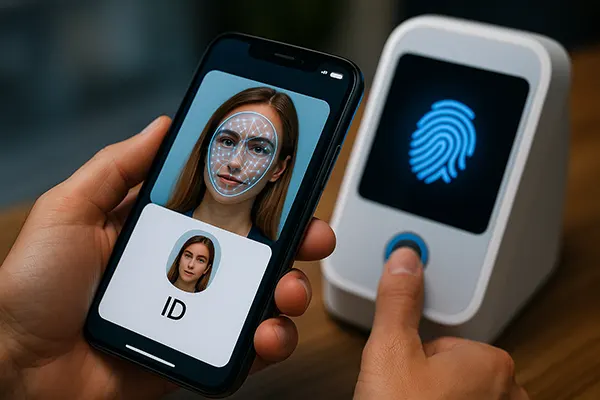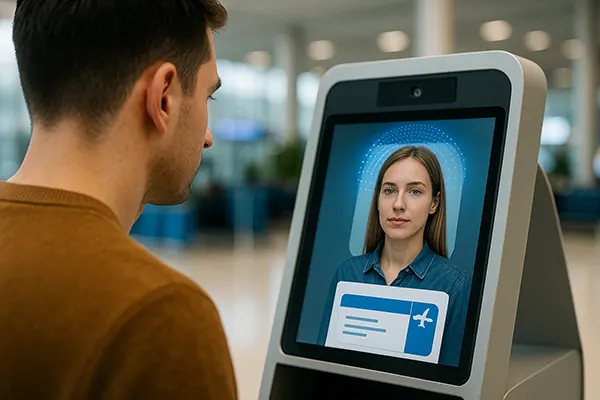Apple Wallet in 2025: How Safe Is Biometric ID Verification?

As digital ID technology becomes more integrated into daily life, Apple Wallet has emerged as a front-runner by embedding biometric verification into mobile identity documents. Since the rollout of digital ID cards in several U.S. states and pilot programmes in Europe, questions have intensified regarding the security, reliability, and privacy of these innovations. With growing public use in border control and government services, it’s vital to evaluate the technology behind Apple Wallet and how it stacks up against competitors like Google Wallet and Samsung Pass.
Security Measures in Apple Wallet: Is Biometric Verification Trustworthy?
Apple Wallet uses a combination of Face ID and on-device cryptographic security modules to authenticate users. These biometric markers are never stored on Apple servers or shared with third parties, offering a decentralised approach that boosts data protection. As of February 2025, digital IDs within Apple Wallet are available in over 15 U.S. states and have entered testing phases in countries such as Germany and the Netherlands.
Apple’s Secure Enclave, a physically isolated component within iPhones, ensures that biometric data cannot be extracted, even in the event of malware attacks. The data remains encrypted and accessible only through biometric recognition, making brute-force attacks virtually impossible. Furthermore, each time a user verifies their ID, Apple Wallet generates a dynamic authentication token, reducing risks tied to data interception.
Despite this advanced protection, no system is impervious. Security researchers in 2024 demonstrated potential flaws in third-party NFC readers that could spoof user prompts, albeit with considerable effort. However, Apple responded swiftly by enhancing its biometric confirmation steps with new double-verification layers and iOS-level monitoring.
Privacy Concerns and Public Trust
One of the central discussions surrounding Apple Wallet’s digital IDs is privacy. Unlike physical ID cards, digital versions can restrict what data is shared. For instance, when proving age for alcohol purchase, users can choose to share only age verification without disclosing the birth date or address. This granular control is a significant privacy enhancement over traditional methods.
Apple has also taken steps to make these features transparent. Each ID verification triggers a prompt, displaying the data being shared and requesting explicit user consent. This approach addresses concerns over silent data harvesting and provides users with confidence in managing their identity.
However, critics argue that wider adoption may lead to eventual pressure from institutions to mandate digital-only IDs, reducing physical document acceptance and possibly sidelining non-iPhone users. Regulatory bodies in the EU are currently evaluating policies to ensure accessibility and interoperability across devices and operating systems.
Comparison: Apple Wallet vs Google Wallet and Samsung Pass
While Apple leads in biometric security and user privacy, it faces stiff competition. Google Wallet, for instance, also integrates biometric authentication but has faced challenges in separating biometric data from cloud backups. Although Google’s encryption methods have improved since 2023, concerns persist due to Android’s fragmented ecosystem and varying manufacturer implementations.
Samsung Pass, heavily used in South Korea and parts of Asia, focuses more on device-level authentication and password management. Its integration with Samsung Knox provides a strong layer of protection, but it lacks the ID-specific architecture and global rollout strategy Apple has deployed.
Apple distinguishes itself by offering system-wide consistency, with hardware and software designed to work in tandem. This integration not only reduces compatibility issues but also enhances security auditing. In contrast, Google and Samsung depend on broader OEM support, which can result in uneven biometric standards across devices.
Use Cases and Adoption Landscape
As of early 2025, Apple Wallet digital IDs are accepted at TSA checkpoints across more than 30 U.S. airports. In Europe, trials at border crossings in Finland and Estonia are underway, evaluating the use of biometric ID verification for EU digital ID initiatives. Apple collaborates closely with governments and international standards organisations to ensure legal and technical compliance.
The increasing use of biometric ID for government services—such as renewing driver’s licences or accessing health records—is another indicator of trust in the platform. Apple Wallet now integrates seamlessly with state services in Arizona and Georgia, allowing residents to present their digital ID via iPhone or Apple Watch.
Despite this progress, limitations remain. Some countries have not yet approved biometric ID usage due to data sovereignty concerns. Moreover, not all institutions—especially in financial and healthcare sectors—accept digital IDs universally, creating a fragmented adoption map.

Biometric Data and Phishing Threats
Although biometric systems are generally safer than passwords, they are not immune to phishing or data breaches. In 2024, there were documented attempts by cybercriminals to clone facial data using deepfake technology to trick biometric sensors in poorly protected apps. Apple’s anti-spoofing algorithms have so far proven resistant, but the evolving threat landscape requires continuous adaptation.
Biometric data is inherently different from passwords: it cannot be changed once compromised. Apple’s design counters this by not storing raw images or fingerprints; instead, it uses mathematical representations. If a device is lost or stolen, the ID is instantly deactivated from the iCloud-connected account and flagged for removal from the verification system.
Phishing threats, however, persist in the form of fake app prompts or fraudulent NFC terminals. Apple’s response has included public education initiatives, increased app vetting, and stricter App Store requirements. Additionally, in iOS 17.5, the system flags suspicious verification requests and prompts users with more detailed confirmations before sharing identity information.
The Road Ahead: Regulation and Global Expansion
Looking forward, Apple Wallet’s digital ID strategy is expected to expand beyond border control and transportation. In 2025, pilots are set to begin in Canada, Australia, and select EU nations for integrating mobile IDs into tax, healthcare, and voting systems. Each deployment will be tailored to local laws and technical infrastructure.
Regulation remains a major variable. In the European Union, the eIDAS 2.0 regulation is pushing toward a unified digital identity framework. Apple has signalled its intent to comply and actively participate in standard-setting discussions. This could allow for wider cross-border acceptance within the EU, increasing the utility of digital IDs in international travel and commerce.
Consumer trust will ultimately determine success. While Apple has a strong reputation for privacy, ongoing transparency, robust legal frameworks, and technical excellence will be necessary to ensure long-term adoption and safe usage of biometric digital identification worldwide.
